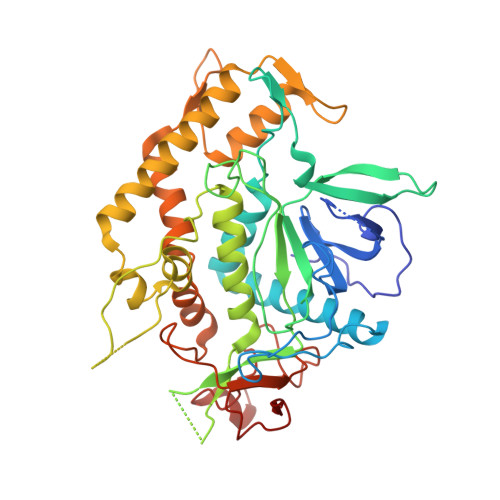Discovery of Dipeptides as Potent Botulinum Neurotoxin A Light-Chain Inhibitors.
Amezcua, M., Cruz, R.S., Ku, A., Moran, W., Ortega, M.E., Salzameda, N.T.(2021) ACS Med Chem Lett 12: 295-301
- PubMed: 33603978
- DOI: https://doi.org/10.1021/acsmedchemlett.0c00674
- Primary Citation of Related Structures:
7KY2, 7KYF, 7KYH - PubMed Abstract:
The botulinum neurotoxin, the caustic agent that causes botulism, is the most lethal toxin known to man. The neurotoxin composed of a heavy chain (HC) and a light chain (LC) enters neurons and cleaves SNARE proteins, leading to flaccid paralysis, which, in severe occurrences, can result in death. A therapeutic target for botulinum neurotoxin (BoNT) intoxication is the LC, a zinc metalloprotease that directly cleaves SNARE proteins. Herein we report dipeptides containing an aromatic connected to the N-terminus via a sulfonamide and a hydroxamic acid at the C-terminus as BoNT/A LC inhibitors. On the basis of a structure-activity relationship study, 33 was discovered to inhibit the BoNT/A LC with an IC 50 of 21 nM. X-ray crystallography analysis of 30 and 33 revealed that the dipeptides inhibit through a competitive mechanism and identified several key intermolecular interactions.
Organizational Affiliation:
Department of Chemistry & Biochemistry, California State University, Fullerton, California 92831, United States.
















